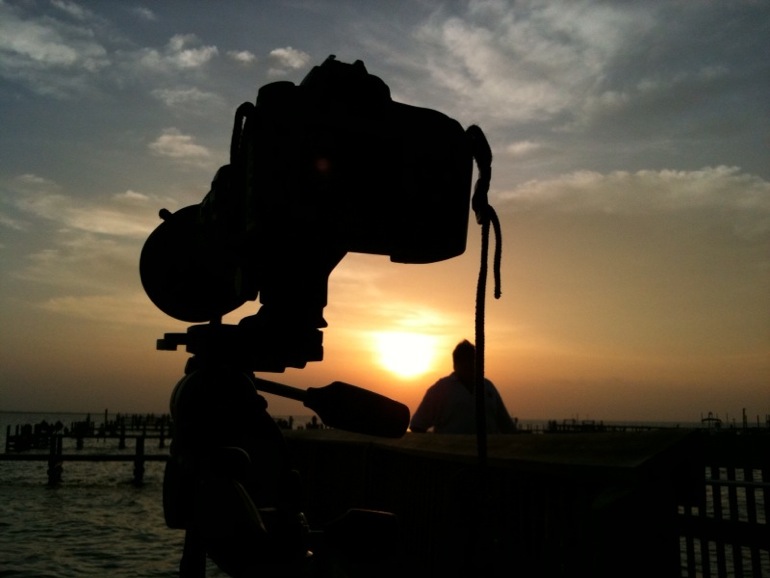
Taken by my iPhone as I waited for the Ares I-X launch.
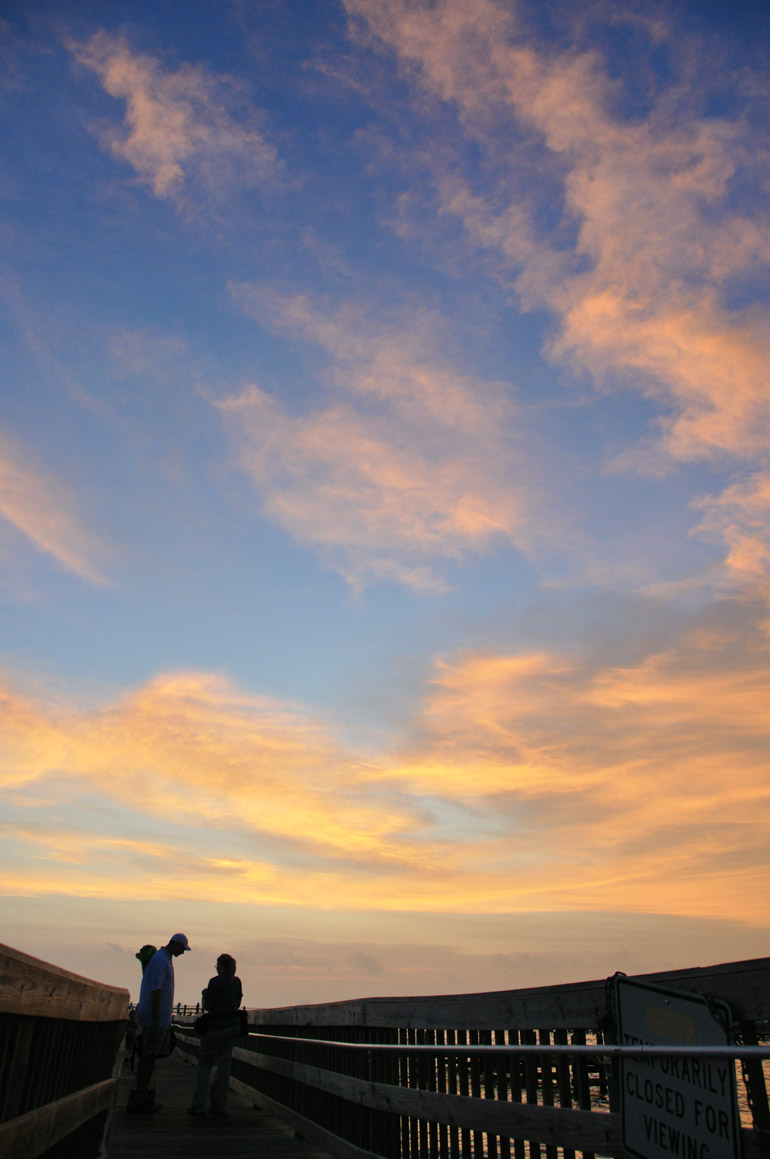
The clouds were scarcest at sunrise, and I was thinking that if the 8 a.m. launch time wasn't acceptable weather-wise, the rocket likely would be grounded for the day. In the end, I was right, but, of course, I had to stay until noon to make sure the thing didn't go up without me looking.
With the space shuttles scheduled to be retired within the next two years, NASA is developing a new rocket to send its astronauts to the International Space Station and perhaps beyond - to the moon or even mars. For the past few years, the space agency's ingenuity and elbow grease have gone into Project Constellation and its Ares I rocket, designed to carry people. A bigger rocket, an Ares V, would carry the cargo, and it's still undeveloped.
After it had been delayed for months, the test of the rocket, called Ares I-X, was set for 8 a.m. Tuesday. There had been much speculation as to whether the test of the rocket's first stage would even happen, especially with a presidential review panel all but suggesting that Barack Obama should abandon Constellation altogether, hire private companies for "taxi rides" to the space station and develop a different rocket - aside from Ares - for deep-space destinations such as Mars or one of its moons - or maybe even an asteroid.
NASA modified launch pad 39B for the purpose of this flight, specifically so it would accommodate the absolutely towering 327-foot rocket. The Ares I is smaller than the 363-foot Saturn V, which launched the first men to the moon, but many of its critics say the system isn't much of an advancement over past technologies. It's also gotten barraged by concerns that the rocket would shake violently and possibly drift off course shortly after liftoff.
But more importantly to me, there are weather stipulations for this test flight that are even stricter than those for shuttle launches. NASA needs clear weather in order to cut down on the possibility that the craft would create static electricity as it cut through the clouds and to communicate clearly with it. For this test, the rocket was set to lift off, arc over the Atlantic Ocean and eventually splash down, parachutes deployed.
In a not-so-unexpected occurrence for a launch, I was awake and at Titusville's Space View Park before the sun even showed itself Tuesday. Pad 39B is just north of the primary shuttle pad, 39A. Titusville is still the best public, unpaid viewing area for 39B because it's directly across the Intracoastal Waterway from Kennedy Space Center, about 13 miles from the pad. But it's still a healthy distance, and the view is often worsened by the haze caused by Florida's signature heat and humidity.
The hazy air was in top form Tuesday morning, too. The forecast hadn't been good all along, but I decided to risk the trip to Titusville for the historic launch. After all, if Obama decides to scrap the rocket, Ares I-X will be the only of its kind to see liftoff. I had to be around for that. As the 8 a.m. launch time rolled around, the weather was unacceptable because of heavy cloud cover within 30 miles of KSC. The launch window extended until noon, though, so there was hope that NASA could get the thing off the ground Tuesday.
While waiting for launches at Space View Park, I always manage to meet nice people who are sitting nearby. Last time, I ran into two brothers who happened to be good photographers. I've greeted people from England, Australia, France and South America. This time, it was a couple from Volusia County, Fla., who graced me with conversation and graciously bought me and a FLORIDA TODAY co-worker some much-needed water to beat the heat. Chatting with them, occasional glances to my iPhone to check for launch updates and frequent sips from the water bottle helped me get through a morning of scheduling, rescheduling and the eventual scrub of the first Ares I-X launch attempt.
Round 2 is scheduled for Wednesday morning. Same time. Same place. I'll be there, of course.
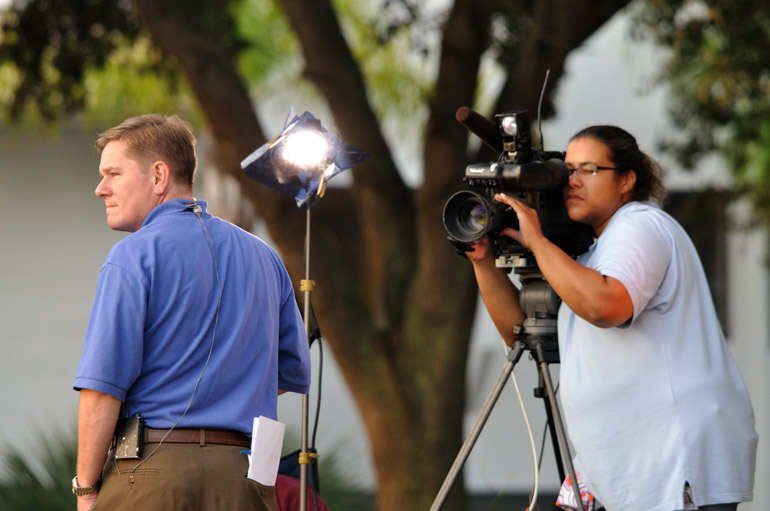
The spectators weren't the only ones waiting around. Various members of the media - press outlets frequently gather at Space View Park because of the view and the crowds it attracts - were milling around, looking for something to do, people to interview. This reporter was filming a bit and looked behind himself to see if he was missing anything.

The wait was long enough for me (I can be a very impatient person). So, I cannot imagine what it was like for this child, especially considering he didn't have an iPhone to keep himself amused during the wait.
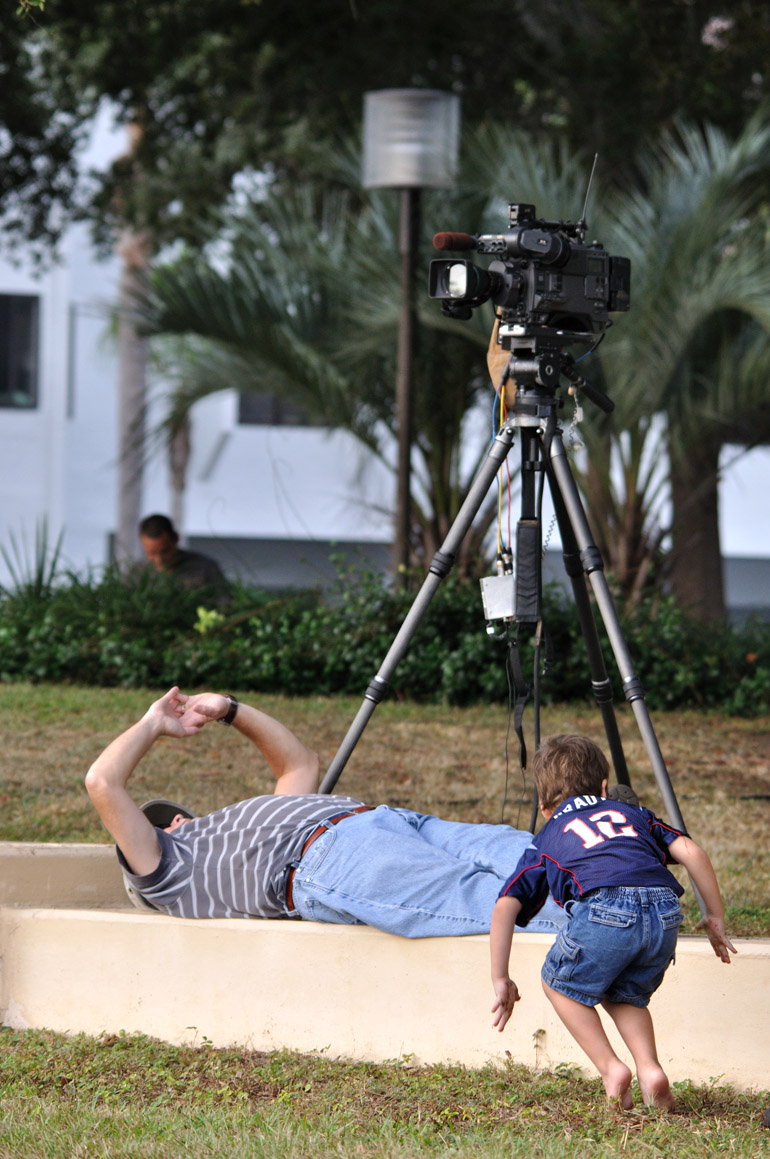
A television cameraman rests on a concrete divider as a younger spectator sneaks up.

And of course, I was waiting, too. But I made myself comfortable. I arrived in Titusville about 90 minutes before the schedule launch time, a time at which the park would have been crowded for a space shuttle launch. Instead, there probably only 50 people in attendance. But that was a bonus for me, as I got a fine photographing spot on the edge of the river.
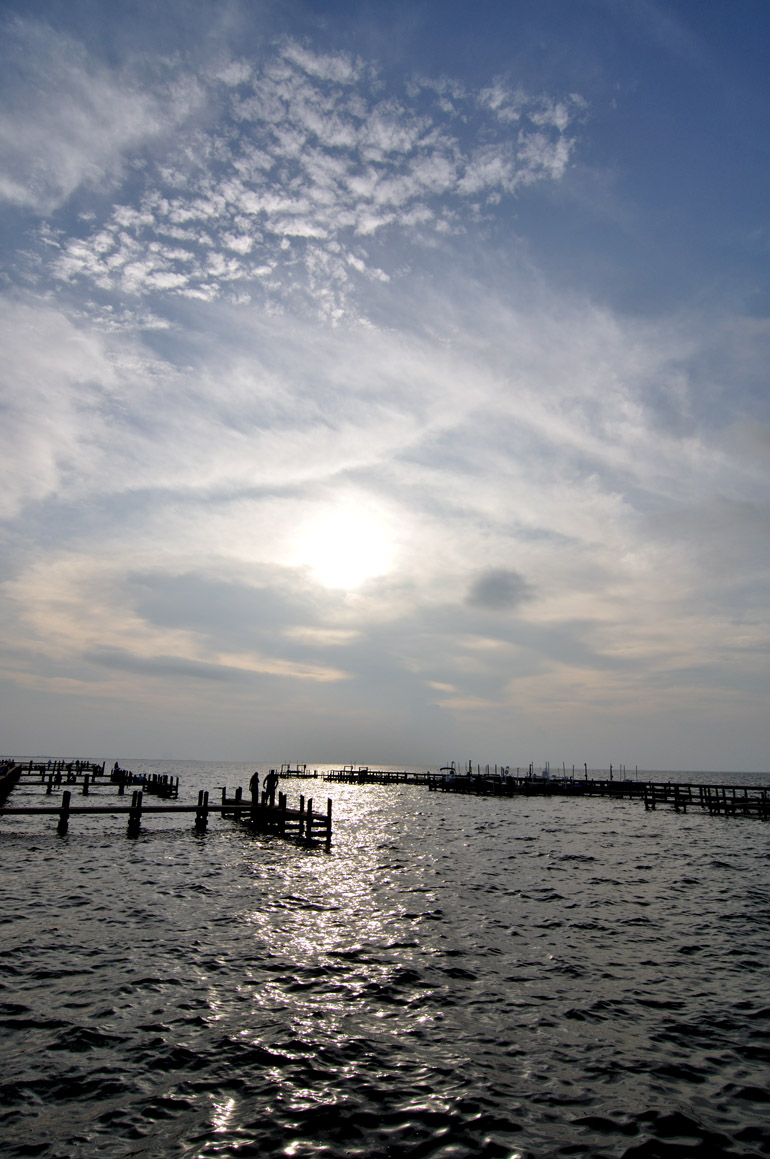
The sun continued to shine, but the clouds were relentless, too. For shuttle launches, this pier is always blocked off from spectators. With such large shuttle crowds, the city of Titusville doesn't want people accidentally falling into the river in spots where the pier does not have a railing.

There's always some sort of bird flying overhead at Space View Park. They were mostly crows and seagulls Tuesday, but an occasional pelican passed, too. After seeing a pink bird flying in the distance, I thought I had made a rare Florida sighting of a flamingo. Upon further inspection and enlargement of the photo, however, I determined that it was just a roseate spoonball, which are common in Central Florida.
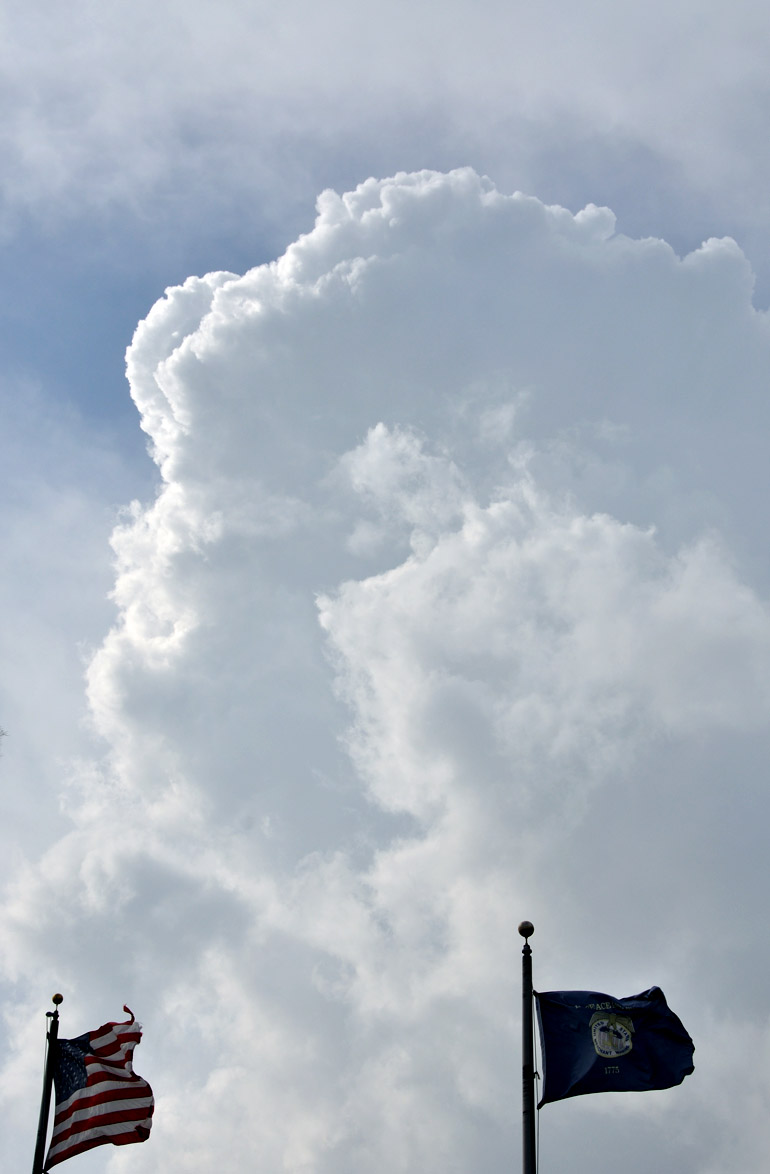
Alas, high-reaching cumulonimbus clouds and high wind put a damper on the launch prospects Thursday.



No comments:
Post a Comment